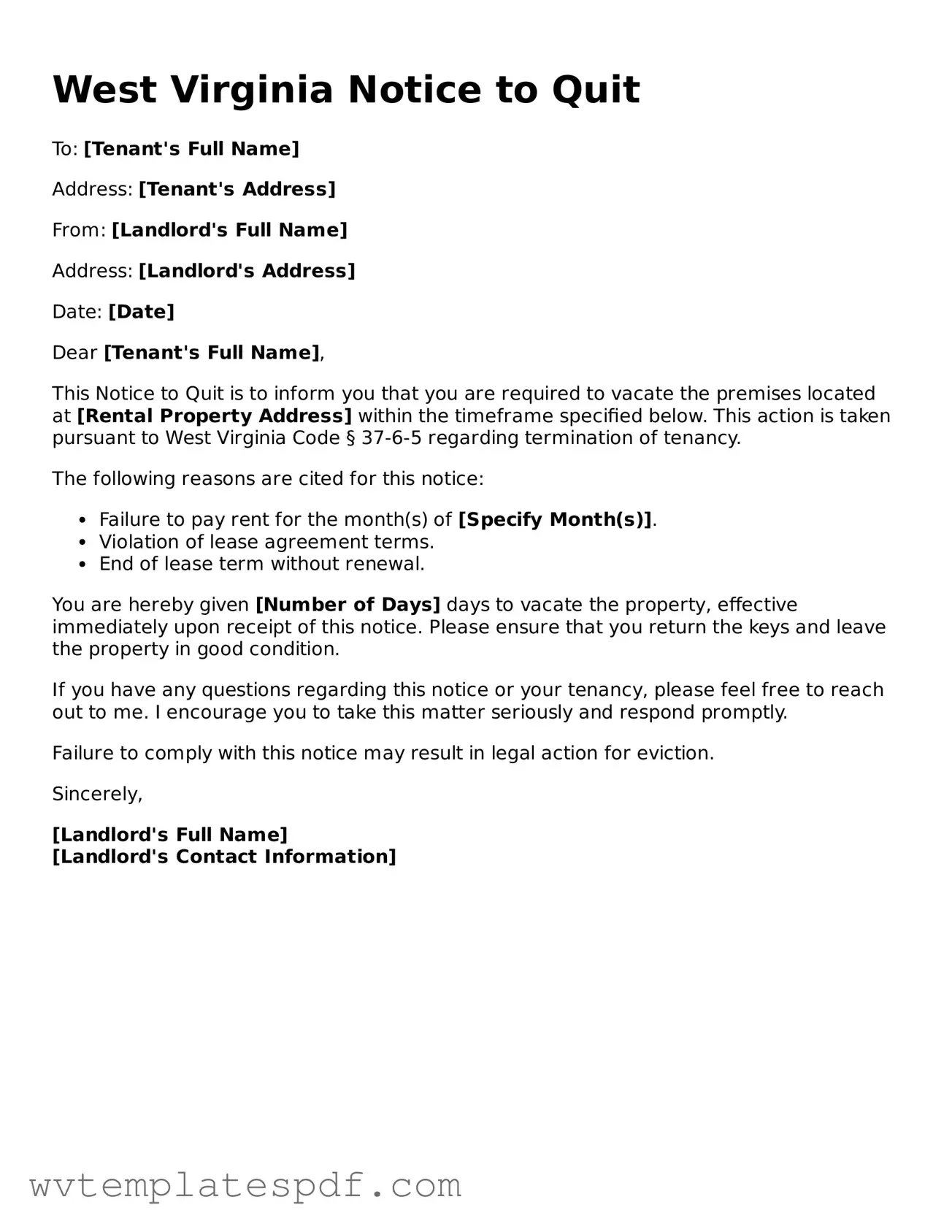Attorney-Verified West Virginia Notice to Quit Template
The West Virginia Notice to Quit form is a legal document used by landlords to formally notify tenants of their intent to terminate a lease agreement. This notice serves as a prerequisite for initiating eviction proceedings, ensuring that tenants are aware of their need to vacate the premises. Understanding this form is crucial for both landlords and tenants to navigate the complexities of rental agreements and tenant rights in West Virginia.
Open Editor Now
